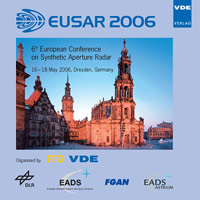SAR Constellation Mission Payload Design
Conference: EUSAR 2006 - 6th European Conference on Synthetic Aperture Radar
05/16/2006 - 05/18/2006 at Dresden, Germany
Proceedings: EUSAR 2006
Pages: 4Language: englishTyp: PDF
Personal VDE Members are entitled to a 10% discount on this title
Authors:
Allan, Peter; Baylis, Arthur; Kefallinos, Dino; Martins-Camelo, Luís (MDA, Canada)
Abstract:
In early 2005 the Government of Canada announced funding for the next generation of Canadian Earth Observation radar satellites. It proposes a constellation of three small Synthetic Aperture Radar satellites that is intended to provide frequent coverage over Canada (covering over any part of Canada at least once a day, and more frequently over the North), and to guarantee uninterrupted service. The satellites will monitor environmental impacts on Earth, promote sustainable development and help ensure Canadian sovereignty and security. The constellation is planned to be operational by 2013, at the end of RADARSAT-2’s life. Under contract to the Canadian Space Agency, MDA is performing a Phase A study to develop SAR Payload concepts that meet the needs of this SmallSAT C-Band SAR mission. In order to establish a baseline concept a number of Payload configuration options, covering a range of active phased array antenna sizes, were identified. Each of these options was then evaluated against imaging performance, mass, stowed volume, and DC power requirements. This paper presents the results of these trade-offs and the preliminary Payload design, including the Antenna Subsystem, Central Electronics Subsystem, an other Payload equipment. Additionally, this paper will contrast the SmallSAT SAR Constellation Mission Payload architecture and technologies to the large spacecraft RADARSAT-2 implementation.


